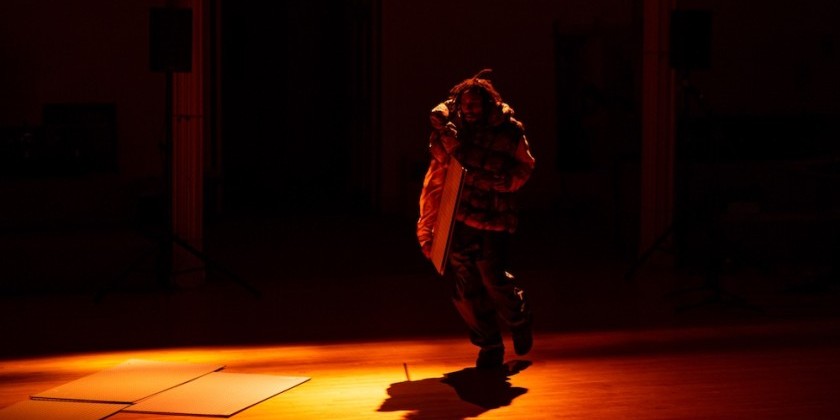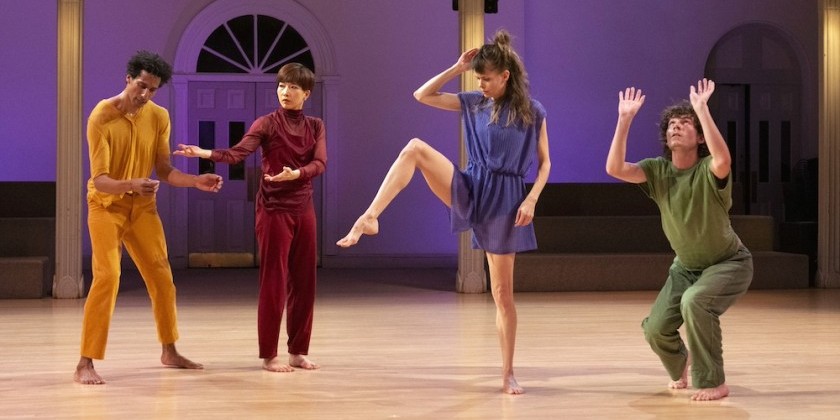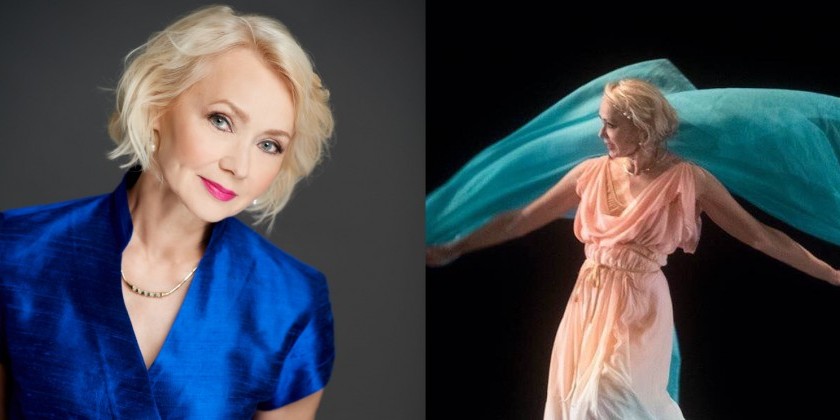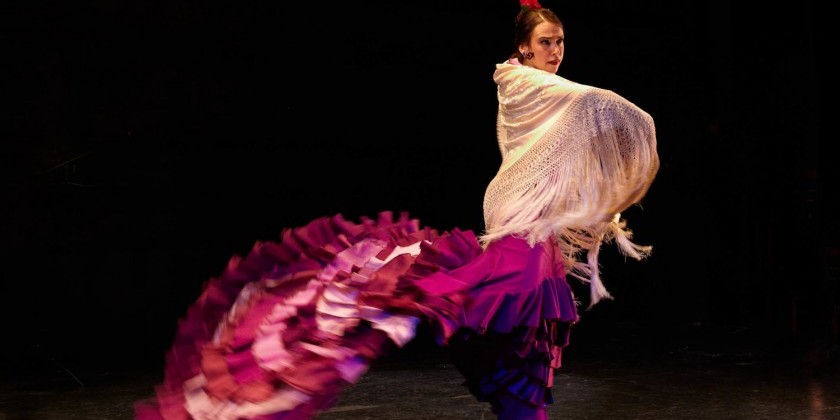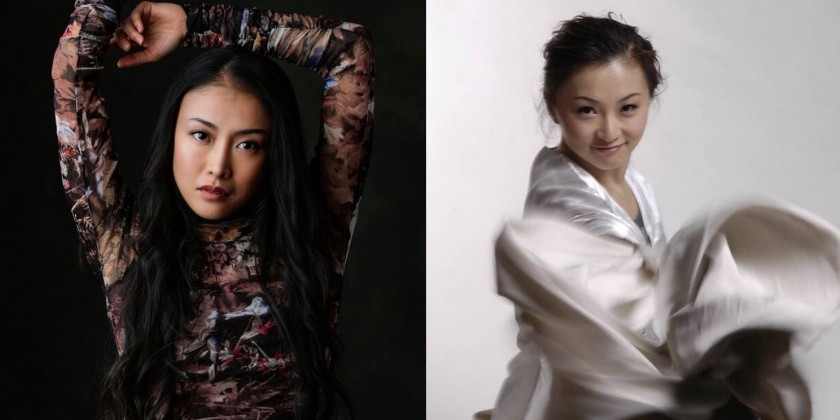The Dance Enthusiast Asks Janaki Patrik about The Kathak Ensemble & Friends' WE SINFUL WOMEN at Danspace Project

The Kathak Ensemble & Friends presents We Sinful Women
Thursday-Saturday, March 2-4 at 8pm
Danspace at St. Mark's Church in-the-Bowery, 131 East 10th St. New York, NY
For tickets, go to Danspace Project.
POEM (for reference), click here.
Sammi Lim for The Dance Enthusiast: Not many Kathak performances shy away from Indian folklore and iconic deities, but We Sinful Women focuses on the theme of 'women' on 'woman.' Tell me about the choreography for the all-female ensemble who will take to the stage?
Janaki Patrik, Artistic Director of The Kathak Ensemble & Friends: Ms. Lim, I appreciate your interest in my work. Like many who are deeply rooted in great classical Indian music and dance traditions, I got my discipline, dance technique and dedication to fine-honing my craft from thousands of hours of rigorous study of a specific classical technique. My first dance training was in Kathak in the 1960s, but in the 1970s, I also studied ballet and Merce Cunningham technique; I had a scholarship for almost ten years in the 1970s when Merce was still teaching a great deal.
Many of us, like myself, do not create new forms and new music gratuitously simply to be 'new.' I can only speak for myself, but I think many of us feel driven by the times we live in and by the world events which surround us. We must respond to these new times, new sounds, new sights, new methods of communication and new mixtures of languages. But we often start by using the music and dance techniques that we learned through study of established 'classical' techniques. The glorious polish of the classical arts was created in part to construct an 'ideal' reality, and therefore is not designed to express the messy ooze that surrounds us.
Another element in my creativity is an intense love of sound — both musical and linguistic. Sound when organized into poetry is gloriously beautiful and can help me respond to the world. The same love of poetry in the Kathak repertoire - the full spectrum from Sanskrit prayers to 'rap-like' compositions called bol-parans came into play when I read Urdu feminist poetry collection titled WE SINFUL WOMEN, which I came to know in a Columbia University graduate course. Since my first reading, I have wanted to express these poems through the vocabulary of movement and gesture that I acquired while studying Kathak, ballet and Merce Cunningham technique.

The all-female ensemble was chosen because of the particular expressivity of these individual dancers, and because they are embodying poetry about women.
In all cases, I gave the dancers a vision of what I visualized for the choreography. I suggest floor patterns and movement paths, go over the translations and meanings of the poetry (literal and figurative), consider changes in dynamic and focus (frontal, side, back, for example). And then we create the choreography. I pick and choose. I catch a whole cascade of ideas out of the corners of my eyes as the dancers improvise; one movement may spark my imagination and lead to an entire phrase or section.
Each dance has its own very unique pattern of choreographic inspiration and realization. Sometimes I am absolutely certain of the entire structure, but often an initial pattern changes considerably in the process. The dancers are an essential part of the process. That is why the program credits say 'Choreography: Janaki Patrik with the Dancers.'
You have asked a profound and fundamental question at the root of creativity in modern times. I thought a lot and wrote a lot.
TDE: Besides express in yourself through movements, you are extremely gifted linguistically and speak Hindi, Sanskrit, Urdu, Braj and Maithili in addition to English. How do your movement and verbal vocabularies complement one another?
JP: My love of poetry is one of the elements that attracted me to Kathak. I studied Russian since high school, and it is related to Sanskrit on the Indo-European language tree. Old Church Slavonic and Vedic Sanskit are related in elements such as sentence structure, the way verbs are conjugated and how nouns are declined, creating a wealth of musical rhyming possibilities.
I quickly realized that in order to create Kathak choreography, I needed to improve my skills in the languages of North India, and studied intensively, whether with my Indian father's temple pandit or formally at Columbia University.
There are advantages to knowing a language as a native speaker, but there are also advantages to knowing a language as an outsider who has studied intensively. I do a great deal of dictionary work. I ask my language informants, such as the Urdu professor with whom I studied at Columbia (Dr. Frances Pritchett) and my friend who is a professor of Urdu language and literature at NYU (Dr. Tahira Naqvi). The dictionary and the professors give me multiple definitions, and they give me multiple nuances of meaning. And each nuance suggests choreographic possibilities.

TDE: The 21st century is a contradictory time; as a woman reflecting on poetry by the Urdu artists who contributed to the poetry collection WE SINFUL WOMEN, I feel rather fortunate to be here, but also at a lost because of how far we have yet to go. What are your thoughts?
JP: Reading history, we learn that in every time and place, modern or ancient, there have been challenges: moral, physical, ethical, personal, global and local. In all my years of discovering how I can apply Kathak to problem-solving, I realized that I must start with myself by living ethically and humanely.
TDE: Adria (Janaki's publicist) sent me photographs of your costumed dancers; it wasn't lost on me that their apparel was more sombre than most Indian garb. Was this a purely aesthetic choice or does it mean to evoke a sense of mourning over sexual injustice?
JP: This question evoked discussion with the dance ensemble since the very early stages of the project. A side note: the costumes might have looked different had we not lost our costume designer after only one meeting; she had to withdraw due to major surgery.
But first-off, let me state that the costume is not meant to express mourning; it is based on the traditional clothing worn by tribal and desert societies to protect their bodies from the sun and the sand and 'the evil eye.'
As for costuming our production, I had a vision of the dancers united by a uniform costume. Black is a simple color and other colored scarves could be used as accents. I wanted the final dance to start with the women wearing black chaadors, but the black cloth kept slipping from their heads, which ultimately led me to the head scarf and the hijab. I went to Jackson Heights and bought traditional hijabs for each of the six dancers, but ultimately decided that in the current political climate, wearing the hijab might draw too much attention to Muslims rather than the central theme of the poetry. The production discusses issues faced by women throughout the world and the costuming is meant to be non-political and non-religious.

TDE: Which dance artist, dead or alive, would you love to share a chai with?
JP: Ulysses Dove, a glorious dancer, whom I first saw in Merce's company in the early 1970s; a fascinating choreographer in his early work for Ailey II; a magnificent choreographer when I saw his later work for various dance companies. He died much too young, struck down at the height of his choreographic powers.
I once met him crossing 7th Ave by Carnegie Hall. We were going in opposite directions and met in the middle of the street and talked and talked while the traffic swirled around us as the traffic lights kept changing. I didn't ask him much about choreography at that time, but I have had a chance to see a lot more of his work since then. I'd love to ask him more about his choreographic process. There was a fascinating interview with him on PBS in which he talked about his piece for six women, Vespers and another piece Dancing On the Front Porch Of Heaven. I'd like very much to meet him for a cup of chai.










